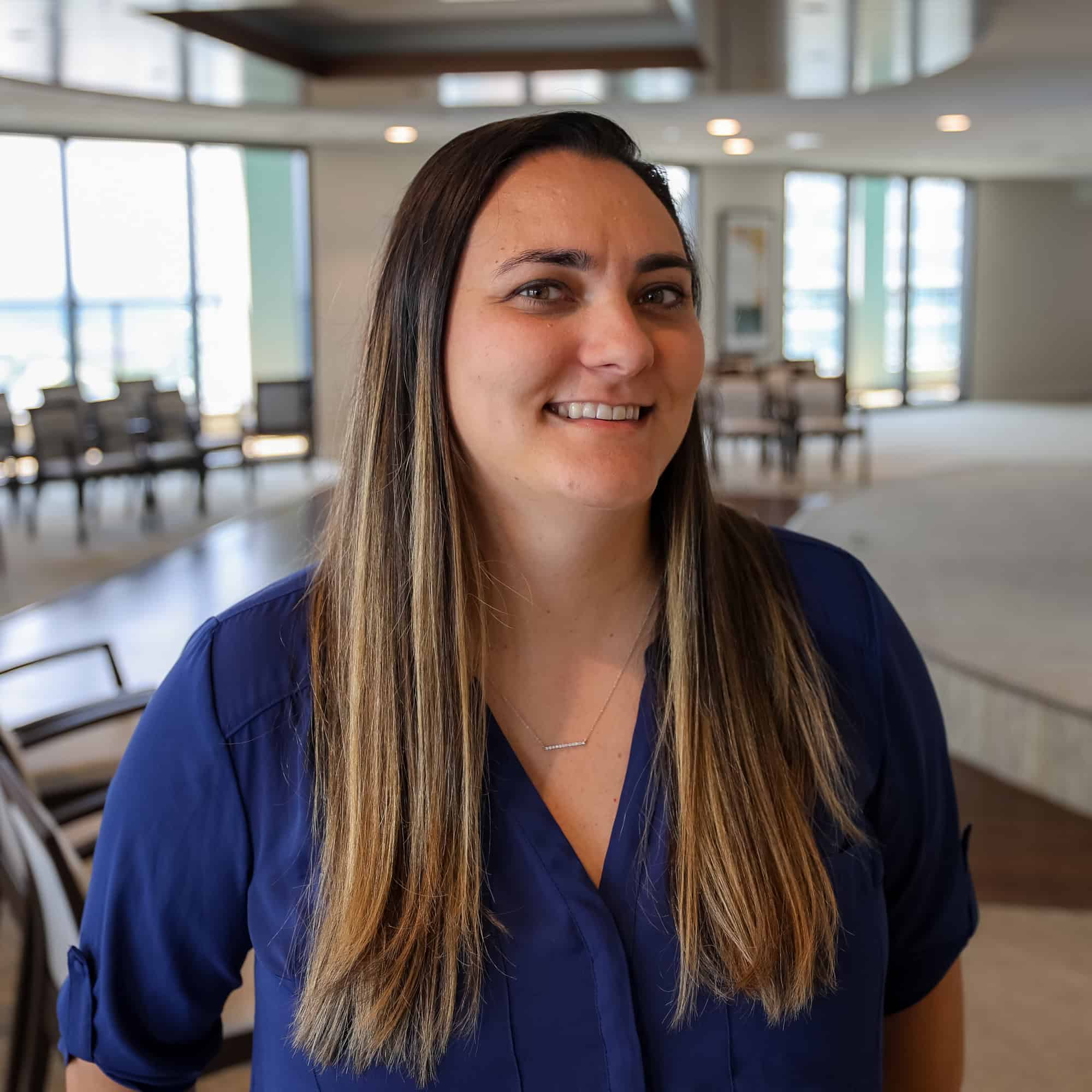THE VBP Blog
Maryland’s TCOC Model – A Blueprint for Whole-Person Value-Based Care
The VBP Blog explores how Maryland’s Total Cost of Care model achieved savings and improved outcomes, and what it can teach us about advancing VBP in LTSS.

July 24, 2025 – When we talk about state-level innovation in value-based care, few models stand out like Maryland’s Total Cost of Care (TCOC) model. Building on the success of Maryland’s earlier All-Payer Model, TCOC expanded its scope beyond hospital budgets to assume statewide responsibility for the total cost and quality of care for Medicare beneficiaries.
While several CMMI models have produced mixed results, TCOC generated nearly $700 million in savings and drove measurable improvements in healthcare quality and equity. In this post, we’ll unpack how TCOC worked, what it achieved, and how its structure offers a roadmap for a whole-person, community-based care transformation.
Model Design and Intent: Aligning the Entire Healthcare System
The TCOC Model is the first and only CMMI model to place a state entirely at financial risk for all Medicare Part A and Part B spending. That includes hospitals, primary care, post-acute care, and other outpatient services. Building on the successes of the Maryland All-Payer Model, which focused on hospital global budgets and ran from 2014 to 2018, the TCOC Model expanded the vision to include community-based care, physician engagement, and population health.
Here are the model’s key design elements:
- Full cost accountability: Maryland committed to keeping Medicare cost growth lower than the national trend.
- Global hospital budgets: Hospitals continued to operate under global budgets, which provide a fixed annual revenue amount—regardless of volume—creating incentives to reduce unnecessary utilization.
- Primary care investment: A major innovation under TCOC was the Maryland Primary Care Program (MDPCP), which supported over beneficiaries and providers through enhanced payments and care management resources.
- Care redesign tools: Through voluntary “Care Redesign Programs,” hospitals and providers were encouraged to share data, coordinate services, and manage complex patients more effectively.
- Equity and population health goals: The model integrated specific metrics related to avoidable hospital use, chronic disease management, and disparities in care. Maryland also aligned its public health infrastructure with the model’s population health goals, making it a truly cross-sector effort.
- Expanded timeline: The model began in January 2019 and runs through 2026, giving Maryland time to invest in transformation while being held to strict cost and quality benchmarks.
The model was intentionally flexible. While hospitals operated under required global budgets, most other elements, like participation in care redesign and primary care programs, were voluntary but incentivized. This allowed providers to join based on readiness while still advancing systemwide change.
What made TCOC different from other models was not just its scope, but its governance and coordination. The Health Services Cost Review Commission (HSCRC), Maryland’s independent rate-setting body, worked closely with CMS and local stakeholders to oversee implementation, performance, and course corrections. In many ways, the model functioned like a statewide accountable care organization, but with public authority and infrastructure backing it.
Results and Evaluation: Proven Savings and Measurable Equity Gains
The Maryland Total Cost of Care (TCOC) Model has delivered some of the strongest results of any CMMI initiative to date. The model reduced total Medicare spending by 2.1%, generating an estimated $689 million in net savings. These savings were primarily driven by Maryland’s hospital global budgets, which aligned hospital incentives to reduce unnecessary utilization and manage population health more proactively.
The impacts went beyond spending. The model achieved statistically significant reductions in:
- Hospital spending (–6.1%)
- Hospital admissions (–16.2%)
- Preventable admissions (–16.8%)
- Outpatient emergency department visits (–5.9%)
These improvements reflected sustained changes from the earlier Maryland All-Payer Model, as well as additional gains during the TCOC period. Hospitals responded to incentives by managing readmissions more effectively, expanding care coordination programs, and collaborating more closely with primary care providers.
Notably, the TCOC Model also led to measurable improvements in equity. Disparities in unplanned readmissions, preventable admissions, and timely follow-up between Black and White beneficiaries shrank by 26% to 40%, and between high- and low-social vulnerability areas by 19% to 31%. These changes were achieved in part through the strategic use of observation stays instead of full admissions, particularly for high-risk and underserved populations.
Taken together, these results show that the TCOC Model successfully bent the cost curve while improving quality and advancing equity. This is an achievement that few federal payment models can claim. It stands out not only for its breadth and financial performance but also for its deliberate integration of public health goals and provider collaboration across settings.
What Worked—and What Didn’t
Maryland’s TCOC Model is a rare example of a large-scale value-based payment model that delivered real savings and quality improvements. Its success came from thoughtful design choices that aligned hospitals, providers, and state agencies around shared goals.
What Worked:
- Global hospital budgets shifted incentives away from volume, leading to fewer unnecessary admissions and better care coordination.
- State-led governance through HSCRC enabled Maryland to adapt strategies and maintain accountability with strong stakeholder engagement.
- Primary care transformation through MDPCP, with expanded care management and proactive population health, helps lay the foundation for whole-person care.
- Equity goals were built in, using social risk metrics to drive measurable reductions in racial and geographic disparities.
What Didn’t Work:
- Limited integration of specialists and LTSS providers weakened continuity for high-need populations.
- MDPCP’s costs outweighed savings, raising questions about its long-term financial impact.
- Patient engagement strategies lagged provider-facing reforms, missing opportunities for direct consumer impact.
- Non-medical supports such as behavioral health and HCBS, were largely excluded, mainly limiting the model’s reach for whole-person care.
TCOC was effective due to its scale and leadership, but it also highlighted where future models must go further to meet the needs of complex populations.
Applying the Model to LTSS: A Foundation for Integrated, Home-Based Care
The Maryland TCOC Model offers a promising foundation for designing value-based payment models in long-term services and supports (LTSS). While LTSS wasn’t included in the model’s scope, the TCOC framework, including its global budgets, equity metrics, and state-level coordination, can be adapted to fit the needs of older adults and people with disabilities.
Imagine applying TCOC-style cost accountability to managed LTSS plans or HCBS providers, paired with incentives for reducing institutionalization and supporting aging in place. The MDPCP’s emphasis on care management and social needs screening could be extended to include LTSS providers, caregivers, and community-based organizations. Also, just as Maryland used data to reduce disparities in hospital use, similar tools could help identify and address inequities in access to home care, transportation, and personal assistance.
To make this work, states need flexible federal authority, integrated data infrastructure, and robust partnerships across Medicaid, Medicare, and community systems. With that in mind, the TCOC Model trusted states to lead. It demonstrates that system-wide accountability is achievable, and that transformation can occur when states are empowered to lead.
Advocate’s Perspective
Maryland’s Total Cost of Care Model stands out not just for its results, but for its vision. By aligning financial incentives with quality, equity, and community health goals, it created a system where providers could thrive by doing what’s right for patients. That’s the kind of shift we need in long-term services and supports, where care isn’t just coordinated, but genuinely centered around the person. What makes this model particularly relevant to the future of long-term services and supports (LTSS) is how it operationalizes accountability across providers, fosters primary care innovation, and embeds equity goals into its design.
As we explore more CMMI models in this blog series, Maryland’s success gives us a powerful reminder that innovation doesn’t have to start from scratch. It can build on what works, evolve through strong partnerships, and expand to meet the needs of the people who too often fall through the cracks of fragmented systems. LTSS reform is long overdue, but if we borrow from the best models like TCOC, it doesn’t have to be out of reach.
Onward!
The newests offering from XtraGlobex:
Dual-Eligible Headquarters
Dual-eligible programs serve a critical role in the healthcare system, providing integrated care for individuals who qualify for both Medicare and Medicaid. CMS plans to align dual-eligible options by 2030, and we are committed to helping you stay ahead of the changes.
The CarePayments Podcast
A quick-hitting informative discussion about healthcare payment models and how they affect MCOs, Providers, Payers, and Care Recipients with your host Fady Sahhar of XtraGlobex.
Listen to The CarePayments Pod
Share This Blog!
Get even more insights on Linkedin & Twitter

About the Author
Fady Sahhar brings over 30 years of senior management experience working with major multinational companies including Sara Lee, Mobil Oil, Tenneco Packaging, Pactiv, Progressive Insurance, Transitions Optical, PPG Industries and Essilor (France).
His corporate responsibilities included new product development, strategic planning, marketing management, and global sales. He has developed a number of global communications networks, launched products in over 45 countries, and managed a number of branded patented products.

About the Co-Author
Mandy Sahhar provides experience in digital marketing, event management, and business development. Her background has allowed her to get in on the ground floor of marketing efforts including website design, content marketing, and trade show planning. Through her modern approach, she focuses on bringing businesses into the new digital age of marketing through unique approaches and focused content creation. With a passion for communications, she can bring a fresh perspective to an ever-changing industry. Mandy has an MBA with a marketing concentration from Canisius College.
